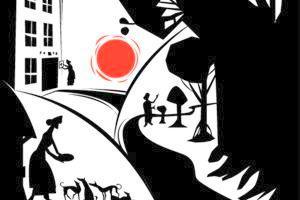In a time of increasing cynicism, three stories that illustrate hope amid overwhelming adversity
The Sceptic | Sandipan Deb
This column is called The Sceptic, but this week, perhaps especially because every passing day now makes us more sceptical, more cynical about what’s going on around us, let me just shed that hat.
Let’s feel humble.
Yes, this needs a bit of explaining. For the past few months, I have been involved in a project that identifies and celebrates bravery, bravery beyond justly rewarded militaristic valour. And for all of us on the project, it has been an extraordinary journey. But let me not bore you. Let me tell you about three women you have quite possibly never heard of.
In the car park behind one of south Delhi’s glitziest multiplexes, in a tiny hut made from plastic sheets and boxes, lives Pratibha Devi. She makes her living by scavenging and reselling the detritus of rich merrymakers who congregate at the multiplex. Twice a day, if you happen to be there at the right time, you are treated to a remarkable sight. More than a dozen stray dogs that live in the car park line up in front of her shed. Sometimes it’s khichdi for them, sometimes when she has a bit of extra money, she treats them to chunks of meat. The dogs have grown up with Pratibha Devi as the only mother they know. “Taking care of them is my life,” she says.
All around her, you hear the buzz of the well-heeled life—fancy cars, young couples hanging out dressed in the latest fashion— people who have never known want or hunger. Pratibha has been threatened, officials have tried to evict her, she has been beaten up by busybodies for taking care of street dogs. But her spirit remains unconquerable. “That one is Sultan,” she points out. “And that one there, I named him Dharmendra.”
Next stop: the Kolkata suburb of Haspukur. One rainy day in 1971, Subhashini Mistry’s husband Sadhan, an agricultural labourer, came home from work with a tummy ache. It soon turned into intense immobilizing pain. Three days later, Subhashini managed to get him to a hospital. The doctors were indifferent—it was too late, they said. All Subhashini could do was watch him die.
But even as she wept, a rage swept through her. She decided that she would save as many people as she could from Sadhan’s fate. She would build a hospital. A young widow, with four small children and 70 paise in savings, would build a hospital.
In the mornings, she sold vegetables. In the afternoons, she worked in her neighbours’ fields. In the evenings, she was a housemaid. And she saved every paisa she could, often forgoing meals. Her son Ajoy worked in a dhaba, and studied hard. He wanted to be a doctor. He achieved his dream. By 1991, Subhashini had managed to save Rs. 85,000, and bought some land. The Humanity Trust was formed in 1993, and a hospital in a 7’x10’ shed with mud flooring started functioning in 1994. Today, it is a three-storeyed building equipped with modem instruments and surgical facilities.
The battle, however, is hardly over. The hospital has a capacity of 100 beds but due to shortage of funds, it is able to service just 35. Subhashini and Ajoy have written repeatedly to the state government for assistance, and been only met with silence. But Subhashini dreams of making Humanity a 700-bed super-specialty hospital. She will possibly do it too.
Come now to a little hut on the edge of Halikal village, 70km from Bangalore, where a mother of 284 children lives—284 sturdy tall children.
The 284 banyan trees form a sweeping awning over a 4km stretch of road. It’s cool and dark even at high noon, the only sound being birdsong from high up in the trees. In 1999, the local deputy conservator of forests toldOutlook magazine: “If you factor in the cumulative effect on the environment in terms of oxygen output, soil conservation, recharging the groundwater, a green canopy giving birds ample space for nests, these trees are worth crores of rupees.”
Saalumarada Thimmakka (“saalumarada”—“row of trees” in Kannada—is an honorific people have added to her name) and her landless labourer husband Chikkannah could not have children. So one day more than 50 years ago, they started planting trees. The road to the next village Kudur was a dry hot one. They planted 10 saplings along the road in the first year, 15 the next year and so on. Every morning they would set off, with four pots of water, refilling them from wells and ponds along the way, and walk up the road watering the saplings and back again.
They covered the whole stretch. The saplings grew to become trees, the trees grew tall, and the couple rejoiced in their children. Chikkanna died in 1990, but Thimmakka continued her life’s work.
We are driving down her avenue with her, when she suddenly asks the driver to stop the car. She points to a tree towering regally over us, and says: “He is one of my favourite sons. He is 50 years old now!” Her face lights up with the smile that can come naturally only to the proudest and most loving of parents. We feel humble.
Sandipan Deb is a senior journalist and editor who is interested in puzzles of all forms
Comments are welcome at theirview@livemint.com
source: http://www.LiveMint.com / THE SCEPTIC by Sandipan Deb / Thursday, December 29th, 2011
